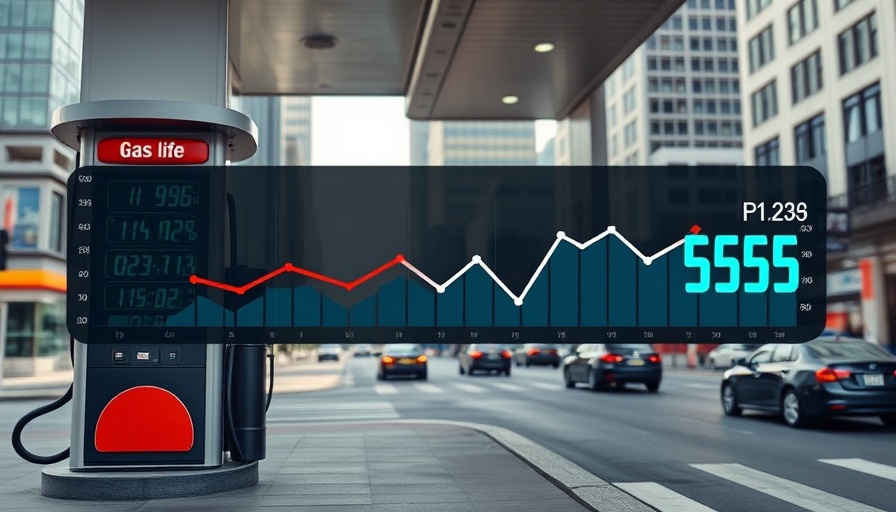
Current Trends in Gas Prices: Understanding the Slight Decline
As consumers enjoy the onset of spring, they find a bit of easing at the pump. The latest data from AAA reveals that the national average price for a gallon of gas has declined to $3.07, which is an eight-cent drop compared to last month and a significant 31 cents lower than last year. Strikingly, this slight price relief comes even as gasoline demand has seen an uptick, jumping from 8.87 million barrels per day (b/d) to 9.18 million b/d this past week.
Demand vs Supply: The Balancing Act
Interestingly, the increase in demand contrasts with a reduction in total domestic gasoline supply, which has fallen from 246.8 million barrels to 241.1 million barrels, slightly dipping below seasonal averages. This scenario raises questions: what does this mean for the future of fuel prices? As we head toward summer, the production rates also saw a dip—averaging about 9.6 million b/d. Economists are keeping a close eye on these shifts as they could potentially lead to price volatility in the coming months.
The Regional Disparity in Prices: Where to Save
The gas price landscape varies dramatically across the United States. In states like California, drivers are still facing some of the highest prices, with costs soaring up to $4.66 per gallon. In contrast, the Southern and Midwestern regions boast lower prices, with Mississippi as a standout at just $2.64 per gallon. Such drastic differences serve as a reminder of how regional policies, including taxes and regulations, can impact local gas prices.
What's Next? Predictions and Emerging Risks
Forecasts indicate that while gas prices may continue to drop overall throughout 2025, we could still face spikes in demand, particularly in April when prices might briefly rise to an average of $3.53 per gallon. Factors such as geopolitical tensions, regulatory changes, and potential tariffs may also threaten the stability we are experiencing now. According to GasBuddy analysts, “While declining fuel prices will provide welcome relief, emerging risks could lead to increased volatility.”
Consumer Impacts: Spending Patterns Shift
The financial implications of fluctuating gas prices are significant for American consumers. It's estimated that Americans will spend about $410.8 billion on gas in 2025, marking an 8% decrease from 2024. This offers a bit of breathing room for households and small businesses alike, possibly allowing for greater mobility and economic activity even as inflation affects other areas of spending.
Electric Vehicle Charging Costs: A Steady Comparison
As gasoline prices remain a critical focus, it's worth noting that the average cost for public electric vehicle (EV) charging has held steady at 34 cents per kilowatt-hour. Although the cost factors into the broader energy landscape, the stability in EV charging rates offers an interesting contrast to the volatility seen in gas prices. States like Hawaii and West Virginia represent the higher end of the charging spectrum, but with decreasing gas prices, the allure of EV ownership becomes more pronounced, especially in states where gasoline prices remain traditionally high.
In light of these findings, it is essential for consumers and businesses to stay informed about gas and energy prices, enabling them to plan better and make informed decisions regarding travel and logistics. The coming months will be crucial, and being mindful of fluctuations could save money and contribute to smarter spending.
 Add Row
Add Row  Add
Add 

 Add Row
Add Row  Add
Add 



Write A Comment